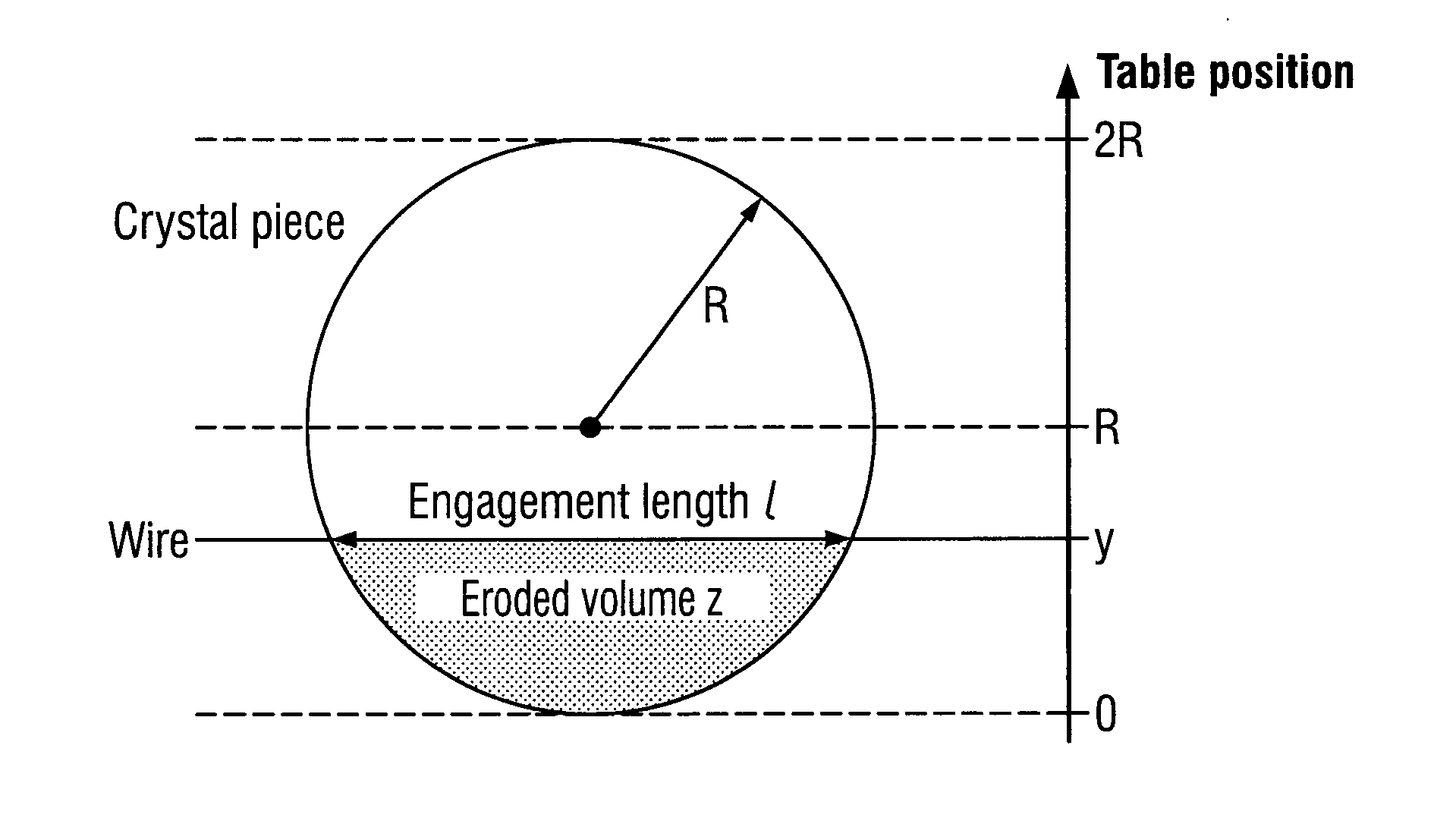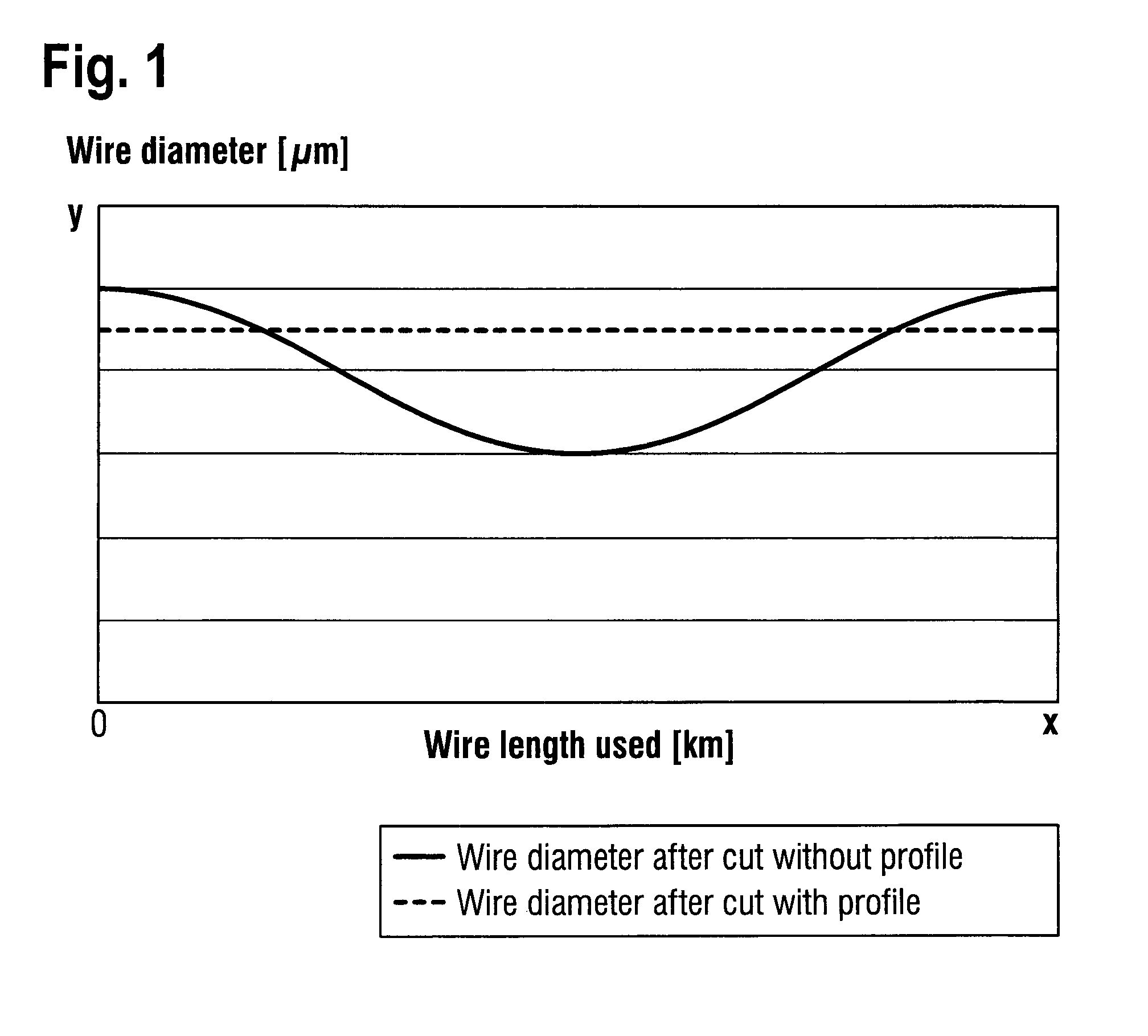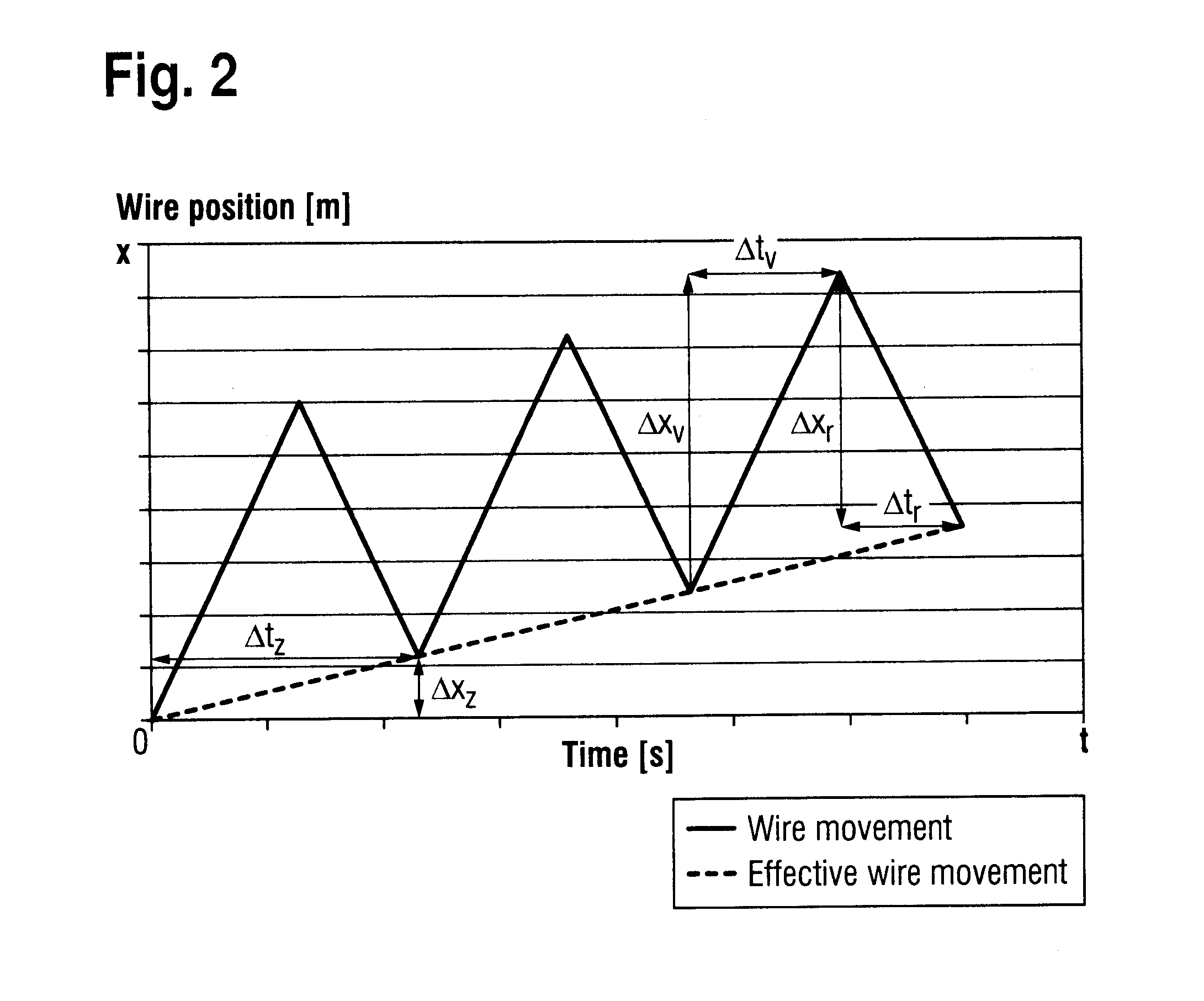Method For Slicing A Multiplicity Of Wafers From A Workpiece
a technology of multiplicity and workpiece, applied in the direction of metal sawing devices, metal sawing accessories, manufacturing tools, etc., can solve the problems of increased wire wear, different degree of wear of sawing wire, and disadvantageous table forward feed
- Summary
- Abstract
- Description
- Claims
- Application Information
AI Technical Summary
Benefits of technology
Problems solved by technology
Method used
Image
Examples
example
[0049]A crystal piece having a diameter of 150 mm was fastened on a sawing beam having a width of 70 mm (cf. also FIG. 4).
[0050]The table forward feed profile was specified according to Table 1 (linear interpolation was carried out between the support points, cf. also FIG. 5).
TABLE 1Table position (mm)Table forward feed rate (μm / min)0600106002036075240130360155360
[0051]For this cutting, 20 km of wire were available, the wire speed was at most 12 m / s and the acceleration when reversing direction was 3 m / s2. The optimized wire movements represented in FIG. 6 were produced by the wire program represented in Table 2, with the assumption that the wire wear is proportional to the eroded volume and the requirement that 30 cycles should be executed per 10 mm of forward feed.
TABLE 2Wire movementWire movementforward per cyclebackward per cycleTable position (mm)(m)(m)0132132113612851411231014412015192162202692353029125240315271603723247542737790372324110315271120291252130269235135267237140264...
PUM
| Property | Measurement | Unit |
|---|---|---|
| speed | aaaaa | aaaaa |
| incision length | aaaaa | aaaaa |
| length | aaaaa | aaaaa |
Abstract
Description
Claims
Application Information
 Login to View More
Login to View More - R&D
- Intellectual Property
- Life Sciences
- Materials
- Tech Scout
- Unparalleled Data Quality
- Higher Quality Content
- 60% Fewer Hallucinations
Browse by: Latest US Patents, China's latest patents, Technical Efficacy Thesaurus, Application Domain, Technology Topic, Popular Technical Reports.
© 2025 PatSnap. All rights reserved.Legal|Privacy policy|Modern Slavery Act Transparency Statement|Sitemap|About US| Contact US: help@patsnap.com



